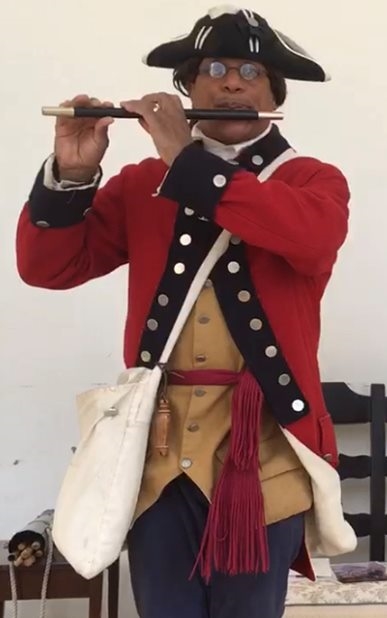The year 2026 marks the 250th anniversary of the Declaration of Independence. Cardinal News has embarked on a three-year project to tell the little-known stories of Virginia’s role in the march to independence. This project is supported, in part, by a grant from the Virginia American Revolution 250 Commission. Find all our stories from this project on the Cardinal 250 page.
On the battlefields of the 18th century, spoken or shouted commands could go unheard amidst the thunder of cannon and musket fire. Officers exercised control via musical commands.

Don Francisco is the resident fifer and a history interpreter at George Washington’s Mount Vernon. “When I’m talking to the young children and adults, I’ll say the fifes and the bugles and drums are the equivalent of texting, tweeting and instant messaging on the battlefield,” he said.
In 1777, with everything else on his mind, George Washington still had time to complain that the army’s music was “very bad” and threatened to demote the drum and fife majors unless it improved. He ordered specific hours for music practice. The Prussian drillmaster Baron von Steuben brought much-needed regimentation, including standardizing the music, according to mountvernon.org.
Signals included charge, retreat, advance, quick step, slow step, left turn, right turn, medical help needed and ceasefire. In camp, musicians assisted with inspection and drill and gave signals for assembly, mail call, water call, wood call and church call. Veterans helped recruits learn the patterns.
Musicians were typically boys or old men. John Greenwood, a fifer, was 15 years old in 1775. Some were as young as 13 or 14. As skilled soldiers, they received extra pay.
More on music of the revolution
“The music of the revolution was played by both the founders and enslaved musicians”
Cardinal 250 podcast with journalist Randy Walker on the music of the revolution.
According to the rules of war, musicians were considered noncombatants and weren’t supposed to be targeted. “Sadly, that didn’t always happen,” Francisco said.
Jim Capers, an African American drummer, enlisted in a South Carolina regiment in 1775. According to the American Battlefield Trust, “Capers received four wounds at the 1781 battle of Eutaw Springs, including two saber cuts to his head and one to his face, and a shot that passed through his side, killing the drummer behind him.”
Capers, a drummer, African American and Patriot, survived the war and was discharged in 1782.
Sources:
Music in the Revolutionary War: https://www.mountvernon.org/george-washington/the-revolutionary-war/music/
Baron von Steuben: https://www.battlefields.org/learn/biographies/baron-von-steuben
Jim Capers: https://www.battlefields.org/learn/biographies/jim-capers
Don’t miss another Cardinal 250 story. Sign up for our monthly newsletter:



